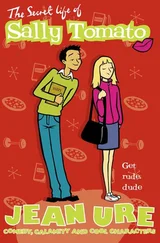It was decided, though, that Norma Jeane would continue to live, at least for the time being, with the Atkinsons. Therefore, for the rest of 1934, she stayed with them in the Arbol Drive home. After just becoming accustomed to having her mother around, now she had to readjust to living without her. For weeks, she would ask where Gladys was and when she was going to return. Even though she’d had that terrible exchange with her mother where her mother wished her dead, Norma Jeane felt that they’d gotten closer in recent months. She was finally happy. Now it seemed as if it were all over, and she wanted to know why. As always, Grace was very patient with her. “Your mommy is gone, sweetheart,” she told her, “and she’s not going to be back for a long time. But I’m here for you now.”
Following the union strike at Consolidated Studios, Grace was working at Columbia Pictures in the movie company’s film library. Because she worked on the periphery of show business, she knew a great many people in the movie business and often discussed with them the current crop of movie stars and their careers at Columbia. Columbia Pictures, though, was considered a “poverty row” operation, not the huge film company it would become in later years.
In the early 1930s, Columbia was a fledgling company that laid claim to the most popular comedy trio of the day, the Three Stooges, who would display their screwball slapstick comedy in 190 short films between 1934 and 1957. The studio’s primary focus was low-budget comedies, westerns, Saturday afternoon serials, and any story that could be shot in a week and in theaters in another week. Speed and economy were its strong suits, and Columbia was the best studio in Hollywood for that kind of fare. Grace was inspired by her surroundings and began to wonder if perhaps she could become involved in the movie business in some way other than as a film cutter.
As Grace came to know Norma Jeane better, she began to believe that the young girl had some potential in show business, maybe as an actress. Not only was she very pretty, but there was something more complex about her. Her eyes were large and intelligent. She was interesting to look at, to watch. She had unusual charisma for such a young child. Of course, it is easy to make such a retrospective judgment about the girl who would one day become Marilyn Monroe, but it was really true just the same. Grace told everyone she knew that she had a strong feeling about the child and that, as she put it, “there might be something there.” Today it would be said that what Grace perceived in Norma Jeane was the “X” factor—a quality that can’t be described but that somehow conveys stardom.
“My mother told me that Grace would dress her up in the prettiest little outfits and bring her to work,” recalls Dia Nanouris, whose mom was an assistant film editor at Columbia. “She doted on her and seemed to love her very much, as if she was her own daughter. In fact, most people did think they were mother and daughter.
“Grace was a big fan of Jean Harlow’s and my mom thought it was Jean Harlow’s career that Grace had in mind for Norma Jeane. One thing was sure, Grace had made up her mind that Norma Jeane would be in show business, and from what was known about Grace, once she had her mind made up about something, it usually happened. She took Norma Jeane to see several Jean Harlow films back then and talked a lot about Harlow to the little girl.”
Arriving in Hollywood during the declining years of the silent era, Jean Harlow (née Harlean Carpenter) traveled the usual starlet route, appearing in Hal Roach shorts and bit parts in forgettable films, before her career took off like a rocket thanks to the legendary Howard Hughes, who cast her in the principal female role in his 1930 World War I aviation epic, Hell’s Angels , an international blockbuster. She would appear in five films the following year for five different studios, including The Public Enemy , a groundbreaking gangster film that established James Cagney as a superstar and Warner Bros. as the premier studio for the gangster genre. This was also the year—1931—that Columbia Pictures’ top director, Frank Capra, cast her in a film, Platinum Blonde , whose title provided her with a lifelong identification.
Grace McKee’s prediction about Norma Jeane’s film future was perhaps more prescient than even she could have imagined. Saratoga , Jean Harlow’s last film, though incomplete, costarred Clark Gable, and with an irony that’s hard to ignore, Marilyn’s last film completed was The Misfits , also starring Gable. (Some Monroe biographers list as her final film Something’s Got to Give , but the picture was never finished and never released to theaters.) *
“There was something a little unusual about Grace’s intense interest in Jean Harlow,” recalled Dia Nanouris. “My mom said that every time she brought the girl to work it was like an audition. She would have her prance about and pose or pout. ‘Show them how pretty you are, Norma,’ she would say. ‘Just like Jean Harlow! Or show them how you smile. Just like Jean Harlow. Show them.’ My mom thought it was strange. After all, Norma Jeane was just eight. The girl was wearing a little bit of makeup, she had her hair curled, and Grace was talking about having her nose ‘fixed’! Grace gave her an enormous wide-brimmed hat to shield her little face from the sun. ‘Doesn’t it look stylish?’ she would ask. But Grace was always a little eccentric. If you look at pictures of her back then, she had peroxided blonde hair, wore a lot of makeup—but wore it well. She wasn’t trashy. She was very theatrical. When I see those pictures today in family scrapbooks, I can’t help but think, yes, this is where Marilyn Monroe got it from.”
Marilyn Monroe summed it up best herself: “Aunt Grace would say things to me like no one else would ever talk to me.… She would sit me down and tell me things and hold my hands. I felt as whole as a loaf of bread nobody’s eaten.”
Norma Jeane’s Troubling Visit with Gladys
L ate in 1934, it was decided that Gladys Baker would be able to obtain leave from the sanitarium on occasional weekends. Because her medication seemed to be working, her doctors thought it might be beneficial if she were able to travel in the outside world, just as long as her time away from the facility was supervised by a responsible person. Grace, of course, was eager for her friend to regain some sense of normalcy in her life and said she would be more than happy to be accountable for her during these intermittent sojourns. However, as it would happen, these weekends with Gladys—once every month or so—which began in September, were to be quite difficult. Gladys, though better than she was when first institutionalized, was still not well.
On one such weekend in late November 1934, Grace took Gladys and Norma Jeane to the Ambassador Hotel for what she hoped would be a lovely lunch in elegant surroundings. The Ambassador, a grand, sprawling hotel on Wilshire Boulevard in Los Angeles, was quite the “in” place at this time, its Coconut Grove nightclub a destination point for an evening on the town for some of Hollywood’s biggest stars. In fact, because the sixth annual Academy Awards presentation had taken place in its Fiesta Room eight months earlier, Grace was certain that a luncheon at such an auspicious place would be a special treat for all of them. Moreover, Grace was proud of the physical transformation that had taken place in her little charge over the last year, and she wanted Gladys to see it for herself.
Norma Jeane now wore her long blonde hair in dangling curls. Of course, she had those cornflower blue eyes, and now even a touch of red brushed across her pouting lips. Somehow, she seemed much more precocious than the last time Gladys saw her. Actually, some in Grace’s circle found the makeover a tad disconcerting. It was as if Norma Jeane were far more mature than her eight years, perhaps even being forced into adulthood—not that her childhood had been, thus far, one to cherish. However, Grace had a specific image of how she wanted the youngster to appear and comport herself in public, and she’d spent many hours tutoring her in order that she would rise to those standards. For instance, she’d taught her to curtsy, to be polite, to look people in the eyes when speaking to them, and also to speak clearly and enunciate every syllable. It was as if Grace were running a charm school with only one pupil.
Читать дальше












